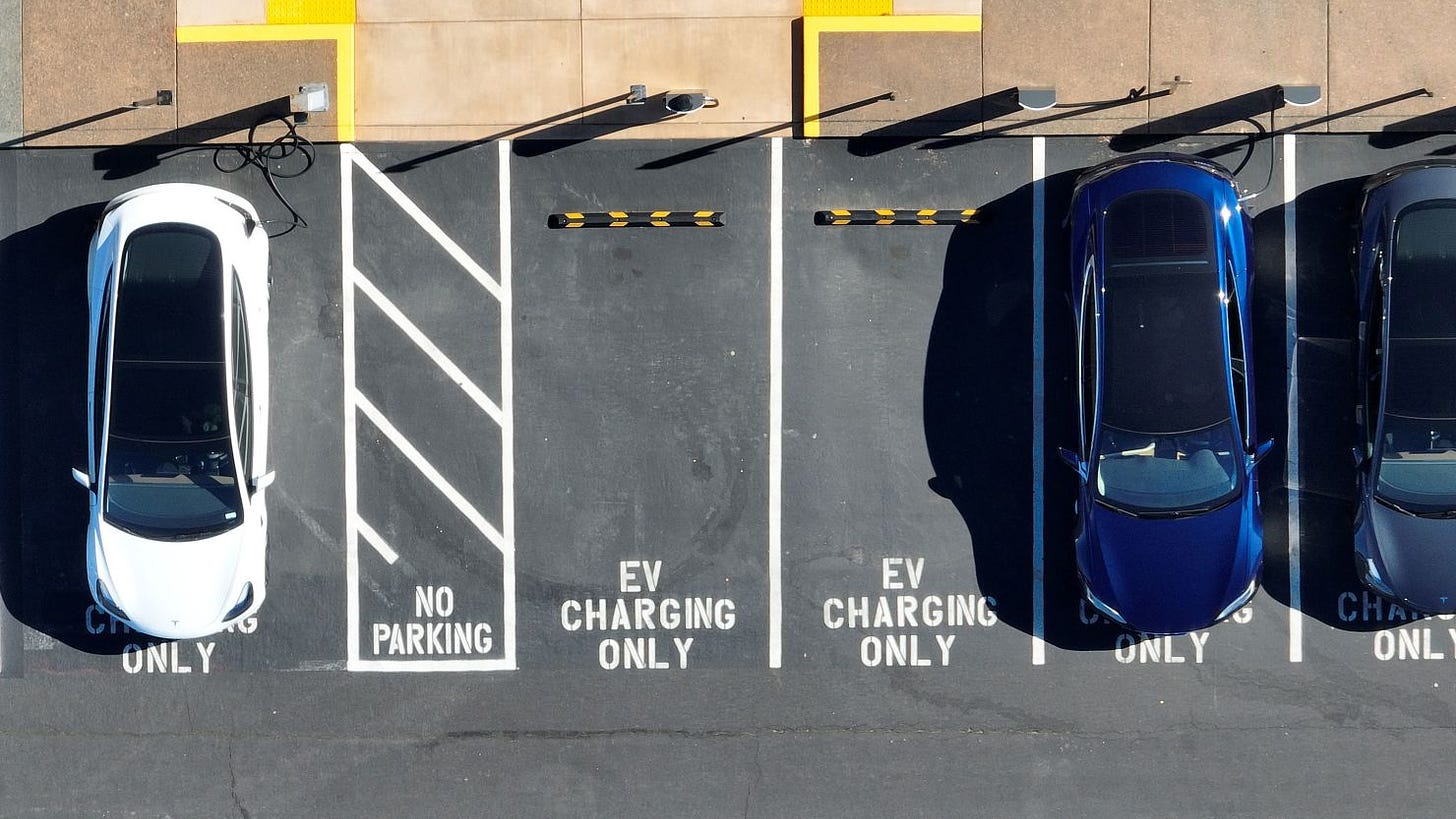EVs get a regulatory boost
Stories & research that could impact what you or someone you know is building :)
It’s officiallllly spring time. Outside of seasonal changes, this week brought huge insight into the near future of EVs and Big Tech getting their ducks in a row.
Headlines that impact
Other headlines. (aka cool things you should know about)
New Research. (to inform and inspire).
Company of the week
Let’s get into it.
Headlines that impact.
EVs get a regulatory boost
The U.S. Environmental Protection Agency (EPA) finally announced their pollution standards for light and medium-duty vehicles— starting with 2027 models and beyond.
What do these standards look like? Separated by vehicle size (light, medium duty) and vehicle type (cars, trucks), limits are set for CO2 ‘grams per mile’ emissions. Automakers are expected to engineer their vehicles with the appropriate technology to meet these standards starting in 2027. *read the full text here.
What happens if a vehicle does not meet these standards? Through the set of compliance examinations vehicles must go through, the EPA has the authority to recall any vehicles that significantly exceed their standards.
The agency anticipates that this rule will avoid 7.2B tons of CO2 emission through 2055.
Reading the tea leaves. The recent years’ of spiking EV sales have largely been driven by indirect regulations and consumer interests. With direct standards enforcing the transition to EV, the industry sits on much nicer, firmer ground. These standards, compared to the stricter ones proposed by the EPA last year, also give more room for different kinds of vehicle technology to meet these goals— specifically hybrid options.
The business of selling green data centers
Amazon (Web Services) announced that it purchased a 960-megawatt data center from Talen Energy for $650M. The data center sits on a 1.2k-acre campus in Pennsylvania where it’s powered by an adjacent nuclear power plant, Susquehanna Steam Electric Station, generating 2.5-gigawatts of power.
Reading the tea leaves. Big Tech, including Amazon and Google, are making their rounds of clean energy contracts— buying up strategic real estate or new partnerships with green energy solutions. As this instigates a trickle-down effect, it opens the market wider for new energy solutions plus their middle-players that plug in transitioning energy consumers. And of course, nuclear energy expansion (!)
Other headlines. (aka cool things you should know about)
Is 2024 the year for nuclear? China Nuclear Power Company announced the proposal of its investment plan for 2024— specifically mentioning a total investment of roughly 121B yuan set mainly for nuclear power and energy projects.
New York’s first offshore wind farm— installed. After 2 years since approval, 12 offshore wind turbines are now delivering power to 70k homes and businesses in Long Island.
China to include aluminum industry in emissions trading. To reduce emissions in its construction sector, China’s emissions trading scheme is preparing to include the specified metal industry— requiring emissions measuring and offset by companies in the industry.
MIT launches climate research and innovation program. The school is committing $75M to bring together resources, students, and faculty for the r&d of new climate solutions, policies, and local initiatives.
New Research. (to inform & inspire).
🪵 Using wood waste for sustainable manufacturing. Researchers from Washington University utilize lignin, a byproduct of wood pulping, to produce renewable chemicals that can replace those typically sourced from petro.
🔋 Charging lithium batteries in minutes? New research from Adelaide University has made advancements that could enable the charging of lithium-sulfur batteries in less than five minutes— instead of several hours— using a nanocomposite electrocatalyst with cobalt-zinc clusters.
🦠 Algae-based plastic degrades at micro level. Scientists at UCSan Diego and Algensis (with funding from the DOE) have put algae-based polymer degradation to the test, proving that algae polymers do degrade at a micro level with proper light, water, and oxygen.
📡 New aquatic method to monitor CO2. Scientists at the University of New Hampshire have developed sensors to measure CO2 emissions in bodies of water— providing insights for climate action plans and land use management.
Company of the week:
🏦 Crux, platform that enables the access and trade of tax credits for companies producing clean energy or materials.





